 W
WElementary school in Japan is compulsory. All children begin first grade in the April after they turn six--kindergarten is growing increasingly popular, but is not mandatory—and starting school is considered a very important event in a child's life.
 W
WCoNETS is a consortium established in September 2013 by 12 textbook publishers and Hitachi Solutions to promote digital textbooks for primary and secondary schools in Japan.
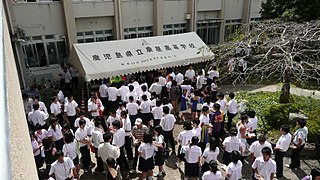 W
WCultural festivals in Japan are annual open day events held by most schools, from nursery schools to universities at which their students display their artistic achievements. People who want to enter the school themselves or who are interested in the school may come to see what the schoolwork and atmosphere are like. Parents may also want to see what kind of work their children have been doing. The festivals are usually open to the public, especially at high schools and universities.
 W
WA dialect card was a system of punishment used in Japanese regional schools in the post-Meiji period to promote standard speech.
 W
WEducation in the Empire of Japan was a high priority for the government, as the leadership of the early Meiji government realized the need for universal public education in its drive to modernize Japan.
 W
WFreeter is a Japanese expression for people who lack full-time employment or are unemployed, excluding housewives and students. The average age of Freeters is within the range of 15 to 34 years old.
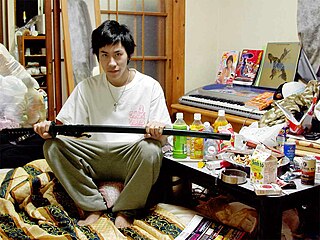 W
WHikikomori , also known as acute social withdrawal, is total withdrawal from society and seeking extreme degrees of social isolation and confinement. Hikikomori refers to both the phenomenon in general and the recluses themselves. Hikikomori have been described as loners or "modern-day hermits". Estimates suggest that half a million Japanese youths have become social recluses, as well as more than half a million middle-aged individuals.
 W
WIn Imperial Japan, between the 1910s and 1945, a Hō-an-den (奉安殿) was a small shrine- or temple-like building that housed a photograph of the incumbent Emperor and Empress together with a copy of the Imperial Rescript on Education. A Hō-an-den was typically installed at elementary schools, though also at a number of other institutions. This served as a place for the veneration of the Emperor of Japan.
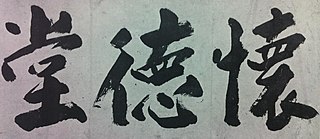 W
WThe Kaitokudō (Japanese:懐徳堂) was a merchant academy located in Osaka, Japan, during the Tokugawa period. Although it opened its doors in 1724, it was founded officially in 1726 by Nakai Shūan. It remained a public institution until 1868, although there have been modern revivals.
 W
WNHK Educational TV , abbreviated on-screen as NHK E, is the second television service of NHK. It is a sister service of NHK General TV, showing programs of a more educational, cultural or intellectual nature, periodically also showing anime, and also airing programming from Nickelodeon. A similar counterpart would be PBS of the United States. NHK displays a watermark "NHK E" at the upper right for its digital TV broadcast. In 2010, NHK began using the abbreviation E Tele .
 W
WNinomiya Sontoku , born Ninomiya Kinjirō, was a prominent 19th-century Japanese agricultural leader, philosopher, moralist and economist.
 W
WNumazu Military Academy was one of the first schools organized along western lines in Japan, and was located in Numazu, Shizuoka. Although the academy operated only from December 1868 to 1871, it made a major contribution to the development of public education in Japan. It was later merged into the Imperial Japanese Army Academy
 W
WThe Onna Daigaku is an 18th-century Japanese educational text advocating for neo-Confucian values in education, with the oldest existing version dating to 1729. It is frequently attributed to Japanese botanist and educator Kaibara Ekken.
 W
WOshu Corporation (鴎州コーポレーション) is a company that manages cram schools based in Hiroshima Prefecture. Oshu Corporation is headquartered in Namikidōri, Naka-ku, Hiroshima.
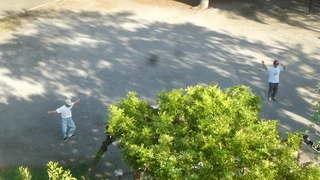 W
WRadio calisthenics are warm-up calisthenics performed to music and guidance from radio broadcasts. They are popular in Japan and parts of China, North Korea and Taiwan.
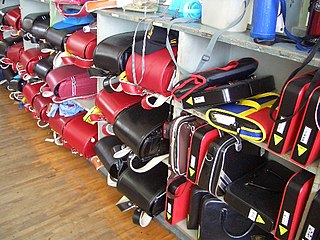 W
WA randoseru is a firm-sided backpack made of stitched firm leather or leather-like synthetic material, most commonly used in Japan by elementary schoolchildren. Traditionally it is given to a child upon beginning his or her first year of school, whereupon the child uses the same bag until grade 6.
 W
WThe Japanese school uniform is modeled in appearance similar to that of the European-style naval uniforms. It was first used in Japan in the late 19th century, replacing the traditional kimono. Today, school uniforms are common in many of the Japanese public and private school systems. The Japanese word for this type of uniform is seifuku (制服).
 W
WSecondary education in Japan is split into junior high schools, which cover the seventh through ninth grade, and senior high schools, which mostly cover grades ten through twelve.
 W
WThe Ship for Southeast Asian and Japanese Youth Program, commonly referred to as The Ship for Southeast Asian Youth Program and SSEAYP, see-YAHP, is an annual youth exchange program organised by the Cabinet Office of Japan and governments of Southeast Asian countries for the purpose of promoting friendship and mutual understanding among the youths of eleven Southeast Asian countries and Japan, to broaden their perspective on the world, and furthermore, to strengthen their spirit of international cooperation and practical skills for international collaboration. Since its inception in 1974, the program has organised 46 international voyages attended by youth delegations sent by governments of respective members.
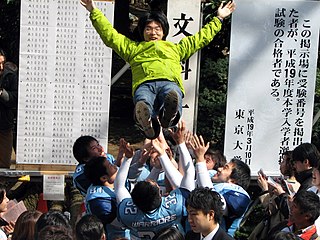 W
WThe yobikō (予備校) are privately-run schools marketed to students who are taking examinations held each year in Japan from January to March to determine college admissions. The students generally graduated from high school but failed to enter the school of their choice. The test, unlike the French baccalauréat and the South Korean College Scholastic Ability Test, has different versions, with different schools looking for results from different exams. In Japan, the test is generally considered the most important event in a child's education. Students who fail may spend a year or more studying to retake the examination. They are colloquially referred to as rōnin. Yobiko are similar to juku except for differences such as curriculum, legal status, and the main type of students who attend.
 W
WYushima Seidō , is a Confucian temple in Yushima, Bunkyō, Tokyo, Japan. It was established in end of the 17th century during the Genroku era of the Edo period. Towards the late Edo period, one of the most important educational institutions of the shogunate, the Shōhei-zaka Gakumonjo (昌平坂学問所)), or Shōheikō , was founded on its grounds.